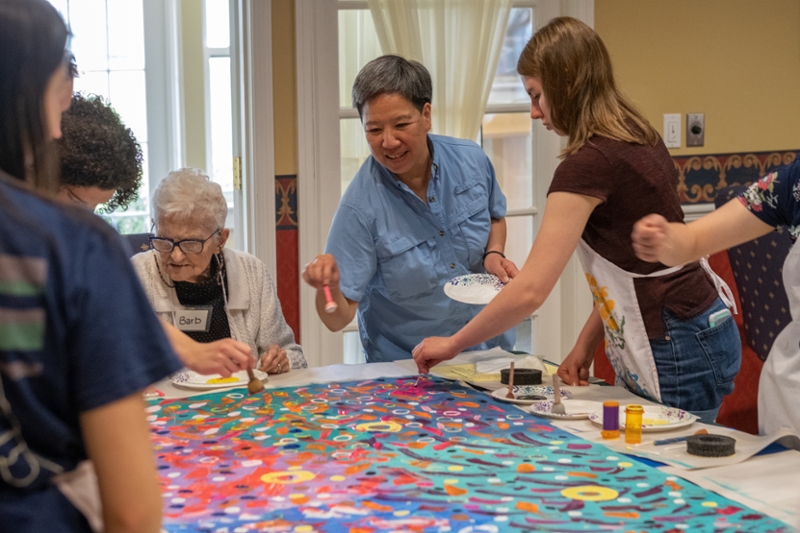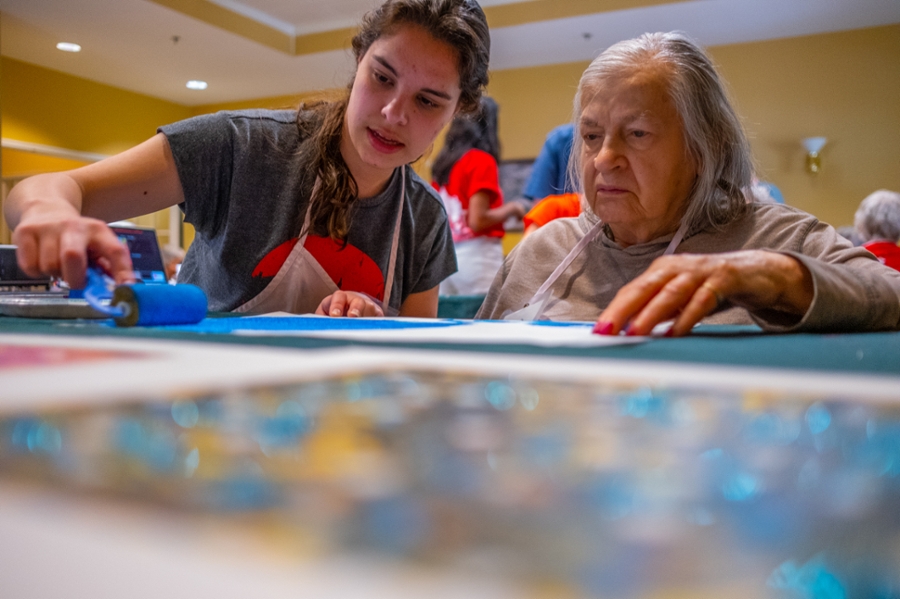

Five things you should know about art, dementia and aging
Q and A with 'Like' Lokon, founder of Miami’s Opening Minds through Art
By Shavon Anderson, university news and communications
There are many kinds of dementias. Elizabeth "Like" Lokon, founder and director of Opening Minds through Art (OMA) – an award-winning, evidence-based art program for people with neurocognitive disorders – uses dementia in plural form to convey the fact that it has many types.
Headquartered at Miami University's Scripps Gerontology Center, OMA pairs people with dementia (artists) with volunteers (Miami students, families or caregivers) who are trained to rely on imagination instead of memory to create unique pieces and help those with dementia maintain their freedom of expression.
We sat down with Lokon to answer key questions about the program, its goals and its current expansion.
How do you define dementia?
Lokon explains how her arts program is successful for dementia patients, even though the disorder causes them to struggle in other aspects of life.
What makes OMA unique?
As other groups develop similar care models nationwide, Lokon talks about why OMA continues to lead in its unique approach.
Can art improve attitudes toward older adults?
Lokon initially conducted a research study with Miami undergraduate students to track whether the intergenerational experience of OMA changed students’ attitudes toward dementia patients. Results showed significantly positive increases in areas like affection, comfort and engagement.
In this clip, Lokon talks about expanding the program nationwide to 12 universities, including here at Miami.
OMA has a sample of 22 medical students at the University of Toledo. Preliminary results mirror those seen at Miami.
Once OMA publishes its full study, Lokon believes there could be enough evidence for other medical schools and health science programs to adopt the model.
What’s the connection between attitude and health care?
As OMA shifts focus to include both pre-med and medical students, Lokon explains the importance of positive attitudes and connection to quality health care.
“This is why we do what we do.”
OMA is wildly popular among students of all majors at Miami. The volunteer art-making sessions, located at regional senior care facilities, often fill quickly. Many students also extend their passion by joining the Threshold Choir, a choir organization connected to OMA, which sings to patients in hospice care.
Hear about the impact OMA has on Miami students.
Get involved
Find out more information about OMA, including ways to volunteer, donate or establish an OMA site, by going to their website.
